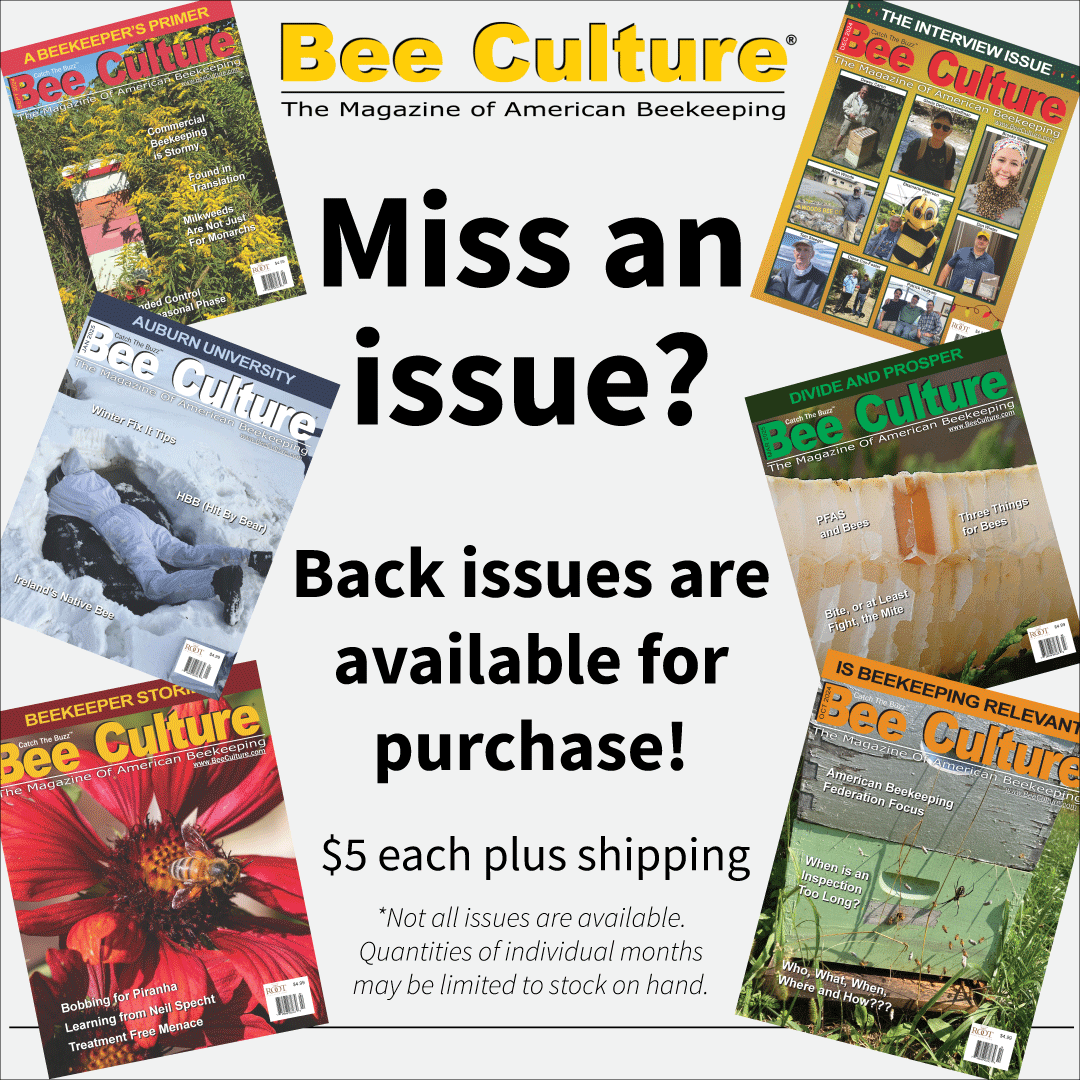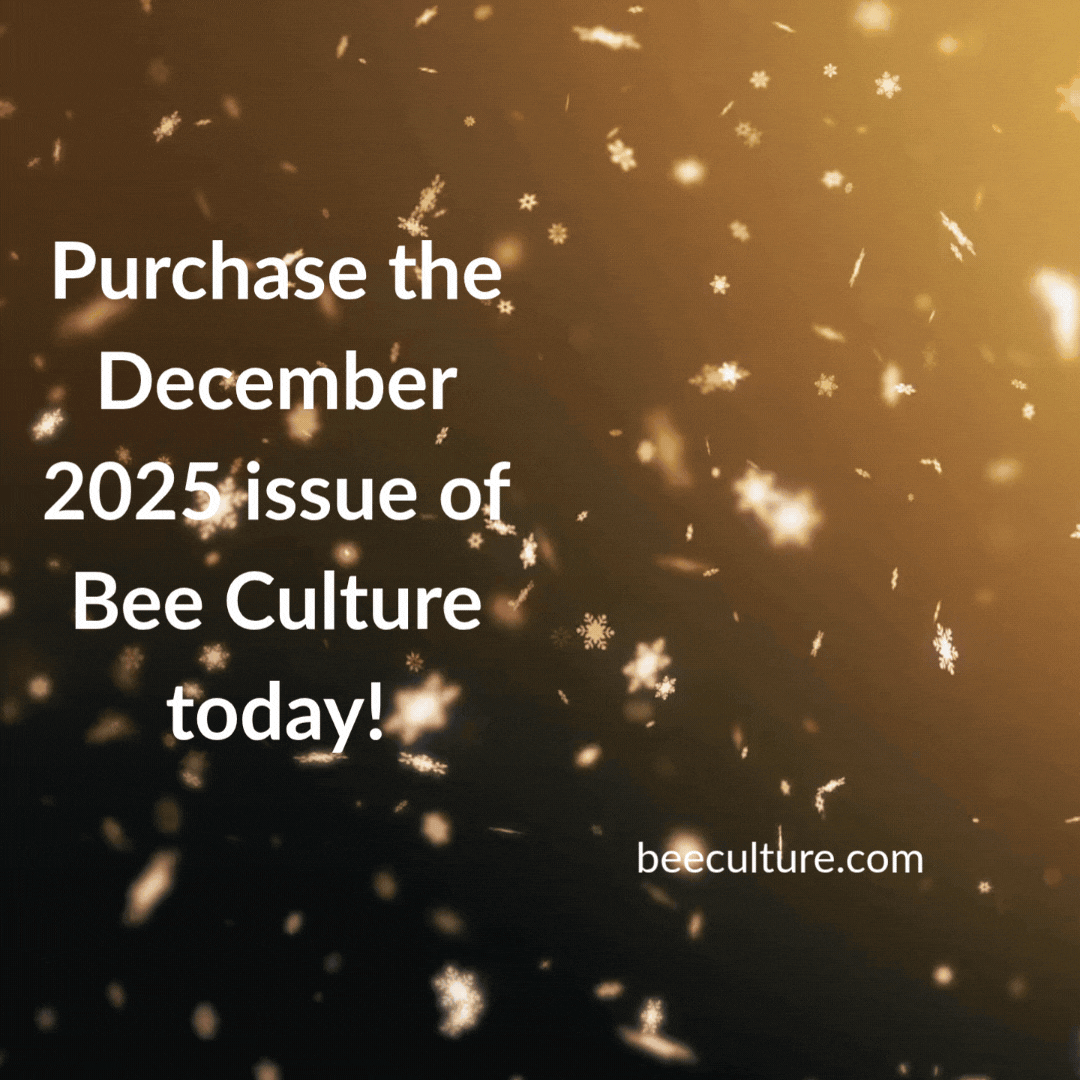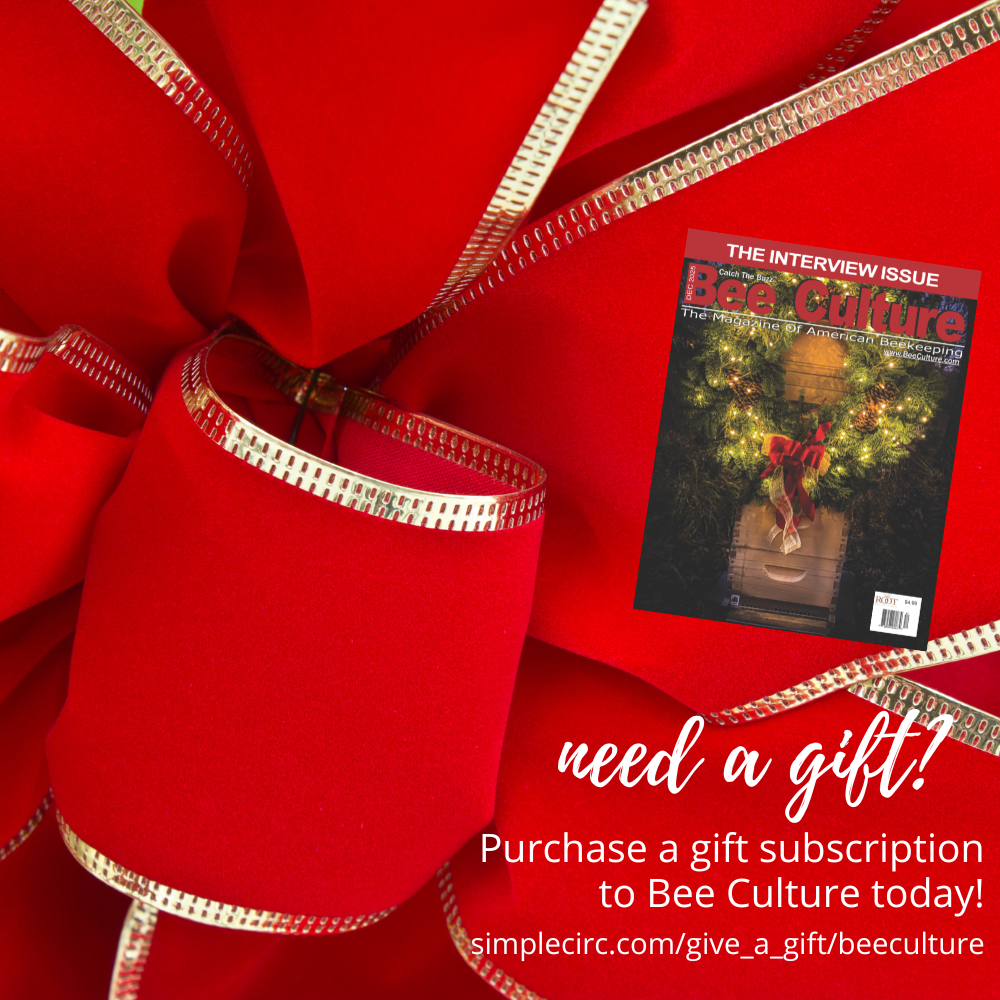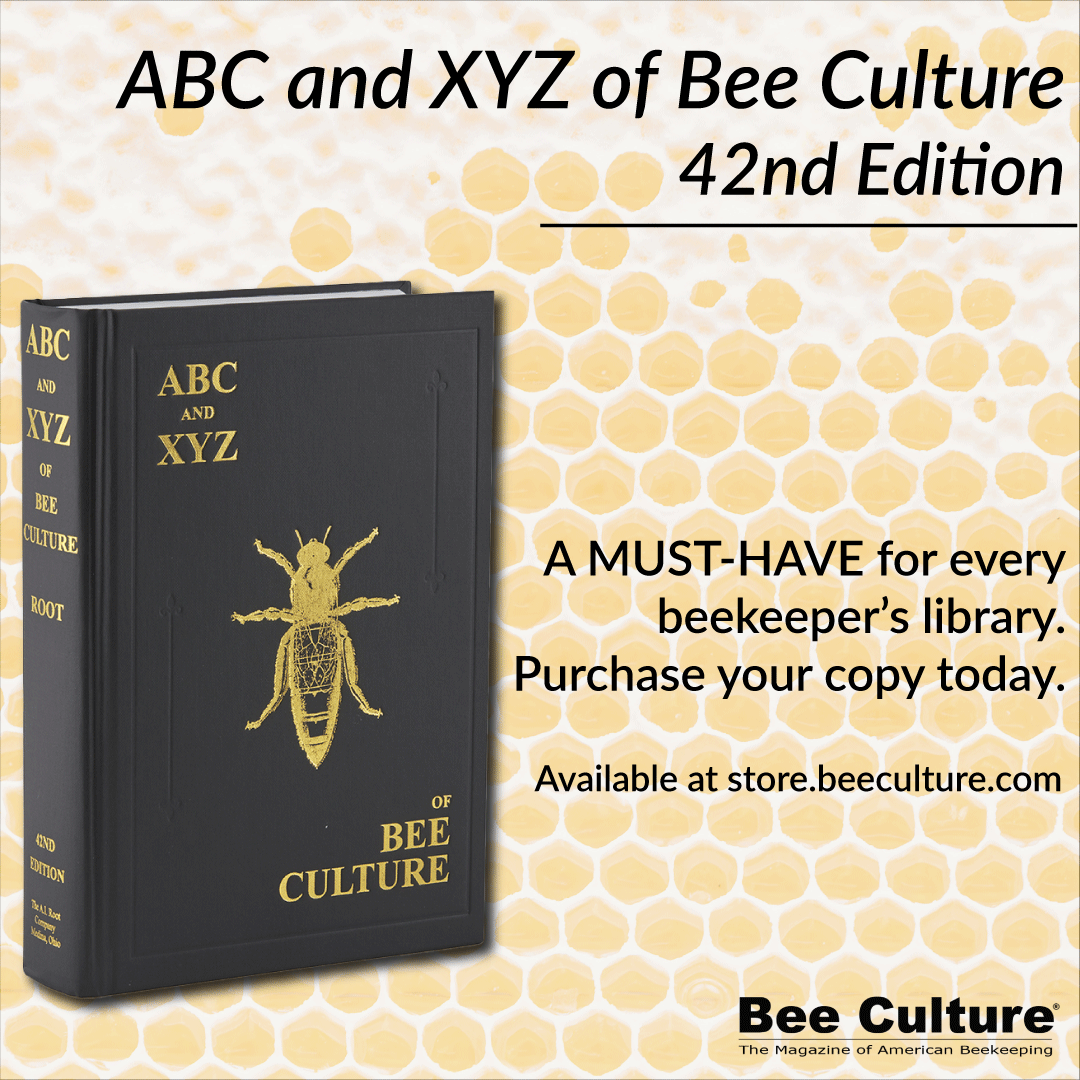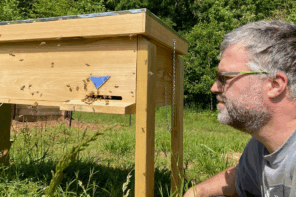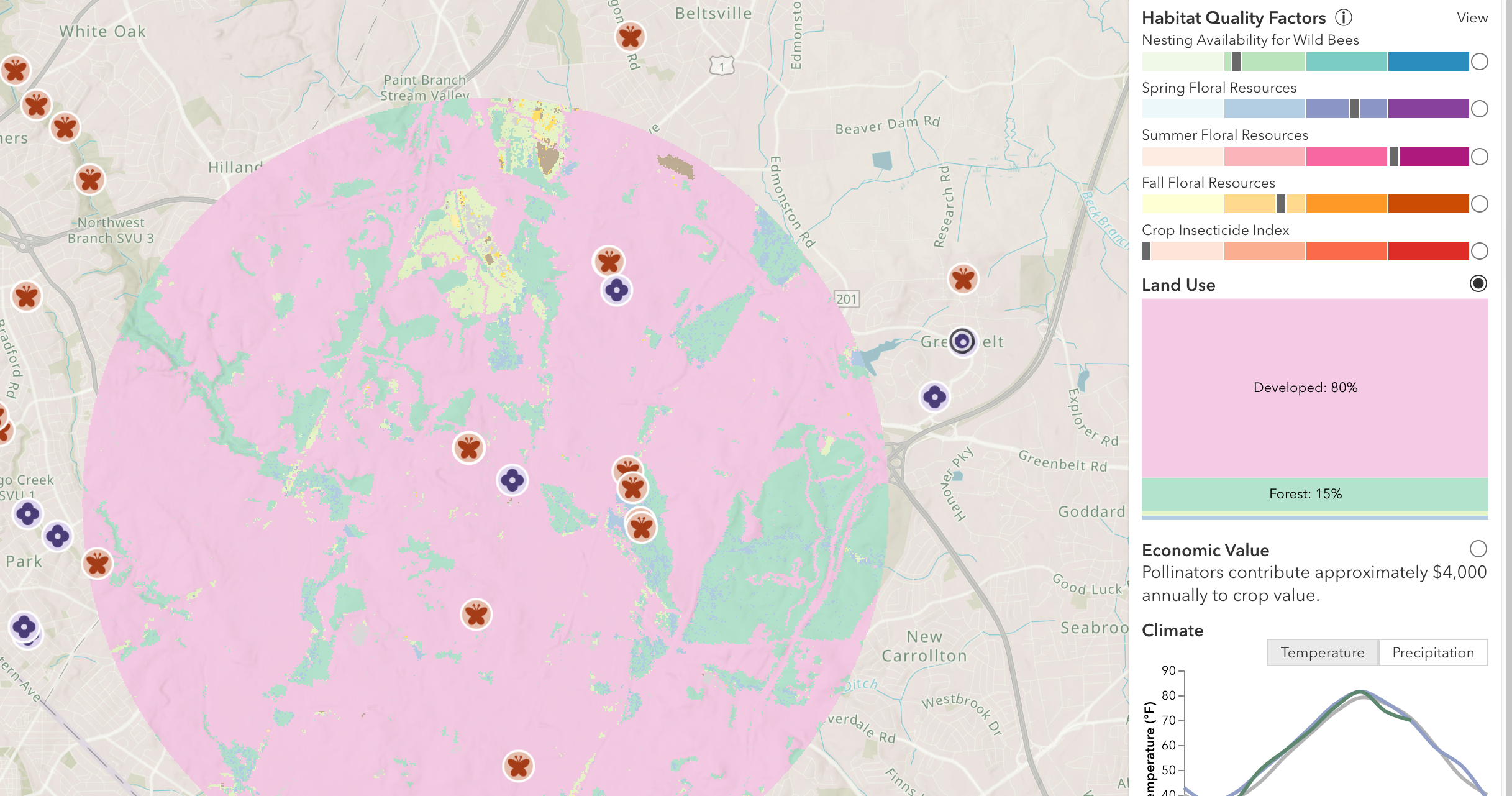Brittney Goodrich1 & Jennie Durant2
Each year, the majority of U.S. commercial beekeepers truck their honey bees to California to pollinate almonds from mid-February to mid-March. Pollinating for the almond industry has benefits and challenges for beekeepers and their honey bees. Almond pollination revenues now outweigh revenues from honey production for the majority of US beekeepers (USDA Honey Report, 2021; Goodrich and Durant, 2020). However, managed colonies may also be exposed to bee-toxic agrochemicals during almond bloom that can have toxic effects on honey bees (Fisher II et al. 2018, 2017; Wade et al. 2019), affecting beekeepers’ ability to meet future pollination contracts and earn income from honey production.
This study aimed to understand the types of pesticides managed colonies were exposed to during almond bloom, and if pesticide labels played a role in application rates during bloom. The Environmental Protection Agency (EPA) regulates pesticide registration and labeling in the U.S., and all pesticides must have labels outlining environmental hazards (see full article for details of federal and California pesticide regulation). Any pesticide registered for outdoor use must have information regarding the pesticide’s toxicity to honey bees.
EPA separates pesticides into three categories: Group I pesticides are highly toxic, Group II pesticides are toxic, and Group III includes all other pesticides. These determinations are based on LD50 values (the median lethal dose that will kill 50% of an experimental population of adult honey bees through a topical application of the test substance). Highly toxic and toxic pesticides (respectively termed “highly toxic” and “moderately toxic” in our study) contain precautionary statements regarding ways to avoid the risk of exposure to honey bees, such as not applying an insecticide to blooming crops or weeds. Group III pesticides (termed “non-acutely toxic” pesticides in our study) do not have a bee-toxic precautionary statement, however independent research indicates that some pesticides in these groups can have sublethally or synergistically toxic effects on honey bees (for list see technical appendix, table A).
To address the use of sublethally and synergistically bee-toxic pesticides during almond bloom due to knowledge gaps in the EPA labeling system, beekeepers, extension specialists, the Almond Board, the EPA and the California Department of Pesticide Regulation (CDPR) jointly crafted and publicized a set of Honey Bee Best Management Practices (Bee BMPs) in 2014 (recently updated in 2018). The Bee BMPs have four core precautions: (1) maintain communication between all parties on the specifics of pesticide application; (2) only spray fungicides in the late afternoon or evening; (3) avoid tank-mixing products during bloom because some agrochemicals might have synergistic toxicities, and (4) avoid applying all insecticides during bloom. At the same time, however, growers sometimes find it necessary to use fungicides, insect growth regulators (IGRs) or other pesticides during bloom —agrochemicals that can be sublethally or synergistically toxic for bees but are not labeled with a bee-toxic precautionary statement.
Methods
To investigate grower pesticide use around the almond bloom period, we drew from CDPR’s Pesticide Use Report database for eight major almond-producing counties in San Joaquin Valley from 1990 to 2016. We concentrated on agrochemical applications in almonds during almond bloom each year (February 15 to March 15), and during the months when bees would commonly be in California either before (January 1 to February 15) or after bloom (March 15 to April 1). Overall, we investigated the use of 12 pesticides with precautionary statements (mostly insecticides), and 24 pesticides with no bee-toxic precautionary statements that have evidence of being sublethally or synergistically toxic to bees (mostly fungicides and IGRs) (for full list see technical appendix, table B).
Results
We found that since 1990, both the bloom-time (February 15 to March 15) applications per acre and the amount per acre (pounds of active ingredient) of the pesticides have decreased. Both of these trends were statistically significant at the 1% level. The decreasing trends in applications and active ingredient per acre vary across type and toxicity of pesticides and are discussed below.
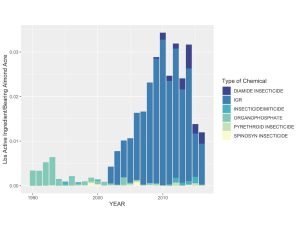
Figure 1. Pounds of active ingredient of agrochemicals in table B applied per bearing acre of almonds during bloom by type of chemical, without fungicides and herbicides, February 15 to March 15, 1990–2016. Note: Listed miticides are those applied to almond orchards, not to treat Varroa mites on honey bees.
Types of agrochemicals applied
We found that fungicides and herbicides are the most commonly applied agrochemicals during almond bloom. Fungicides were the only pesticide category with a statistically significant decrease in pounds of active ingredient and applications per acre applied during almond bloom over the 1990–2016 time period. Figure 1 shows the pounds of active ingredient applied by type of chemical during almond bloom, excluding fungicides and herbicides. It is apparent that there was a switch in the late 1990s from the use of highly toxic insecticides, organophosphates and pyrethroids, to IGRs. The use of IGRs increased from 2002 to 2010, when organophosphate and pyrethroid usage began to decrease.
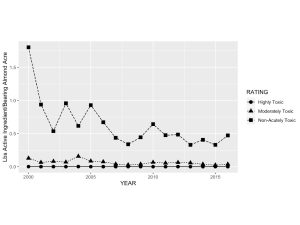
Figure 2. Pounds of active ingredient of agrochemicals in table B applied per bearing almond acre during almond bloom by bee-toxicity rating, February 15 to March 15, 2000–2016. Note: Non-acutely toxic includes sublethally and synergistically bee-toxic chemicals (table A).
Time periods and toxicity of applications
Figure 2 shows that highly toxic chemicals have been applied at low levels per acre during almond bloom since the year 2000, so there was little room to decrease this amount over time. Moderately toxic chemicals were applied at slightly higher levels per acre than highly toxic ones and saw a slight decrease between 2000 and 2016. Non-acutely toxic chemicals were applied at relatively high levels per acre beginning in 2000, but have decreased over time (fig. 2).
Table 1 shows the average number of agrochemical applications per day in the San Joaquin Valley for the years 2010 to 2016, separated by bee-toxicity rating and timing with respect to almond bloom. This table is not adjusted for almond acreage, and is meant to broadly reflect growers’ decisions regarding pre-, during- and post-bloom applications. Highly toxic chemicals are applied infrequently when bees are in almond orchards during bloom, on average one application per day. However, there are still applications of highly toxic and moderately toxic pesticides prior to bloom. Non-acutely toxic chemicals without bee-toxic precautionary statements are often applied within the almond bloom time period with an average of 594 applications per day.
Figure 3 shows histograms of weekly chemical applications with and without a bee-toxic precautionary statement. The beginning and end of almond bloom each year are highlighted with two pink lines. We found that chemicals with precautionary statements were applied before bloom, but rarely during the bloom period (fig. 3a). On the other hand, chemicals without precautionary statements were frequently applied during bloom (fig. 3b).
Key Takeaways for Beekeepers
Our results suggest that growers are generally following the label during bloom, but applying unlabeled (and sometimes bee-toxic) agrochemicals while bees are pollinating almonds.
Given this finding, changing EPA labeling requirements to include sublethally and synergistically bee-toxic agrochemicals, and growers’ full adoption of the Bee BMPs, may be important steps to improve bee health.
Beekeepers can also take a number of precautions to reduce the risk of their colonies’ agrochemical exposure in almond orchards. The finding that many bee-toxic pesticides are applied in January, the month before almond bloom, is problematic for beekeepers, given that many beekeepers place colonies in holding yards near almond orchards over winter. The applications of
highly and
moderately toxic pesticides prior to bloom (fig. 3a) may impact these colonies, and beekeepers may want to consider other alternatives to bringing in colonies prior to almond bloom, or discuss application timing with growers adjacent to their beeyards. Whenever beekeepers bring colonies into California, they should register with the BeeWhere program
(https://beewhere.calagpermits.org/). BeeWhere offers an online portal with a GIS mapping system where beekeepers can register their hives with the county, so pesticide applicators can notify them before an agrochemical spray. Beekeepers may also consider mitigating issues caused by pesticide damage through the use of clauses in their almond pollination agreements. The beekeeping and almond industries are increasingly reliant on one another for long-term economic viability, so working together to improve bee health should be of interest to parties on both sides of the pollination agreement.
| Table 1. Mean number of total applications per day in San Joaquin Valley for agrochemicals in table B by toxicity rating and timing, 2010-–2016 |
|
Pre-bloom
(Jan 1-Feb 14) |
Bloom
(Feb 15-Mar 15) |
Post-bloom
(Mar 16-Apr1) |
| Highly toxic |
49 |
1 |
10 |
| Moderately toxic |
31 |
21 |
3 |
| Non-acutely toxic |
51 |
594 |
276 |
Note: Non-acutely toxic includes sublethally and synergistically bee-toxic chemicals (online appendix table A).
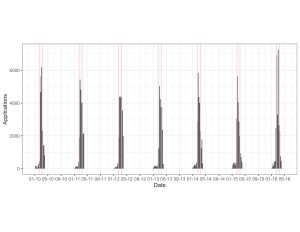
Figure 3. Histogram of weekly applications of agrochemicals in table B (almond bloom period highlighted), January 1 to April 1, 2010–2016.
a) Agrochemicals with precautionary statements
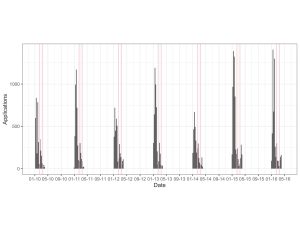
b) Agrochemicals without precautionary statements
References:
Fisher II, A., Coleman, C., Hoffmann, C., Fritz, B., and Rangel, J. (2017). The Synergistic Effects of Almond Protection Fungicides on Honey Bee (Hymenoptera: Apidae) Forager Survival. J. Econ. Entomol. 110, 802–808.
doi:10.1093/jee/tox031.
Fisher II A, Colman C, Hoffmann C, et al. 2018. The effects of the insect growth regulators methoxyfenozide and pyriproxyfen and the acaricide bifenazate on honey bee (Hymenoptera: Apidae) forager survival. Apiculture and Social Insects 111(2):510–16.
https://doi.org/10.1093/jee/tox347Goodrich, B. K., and J.L. Durant. 2020. “Going Nuts for More Bees: Factors Influencing California Almond Pollination Fees.“ARE Update 24(1): 5–8. University of California Giannini Foundation of Agricultural Economics.
Wade, Andrea, Chia Hua Lin, Colin Kurkul, et al. 2019. Combined toxicity of insecticides and fungicides applied to California almond orchards to honey bee larvae and adults. Insects 10(1):1–11.
https://doi.org/10.3390/insects10010020
1 Assistant Cooperative Extension Specialist, University of California, Davis
2 Post doctoral Scholar, University of California, Davis


